Going from nothing to $1B is a massive undertaking. Alessio Artuffo, President and COO of Docebo, shares lessons learned, misconceptions, and what he would have done if he could do it all over again.
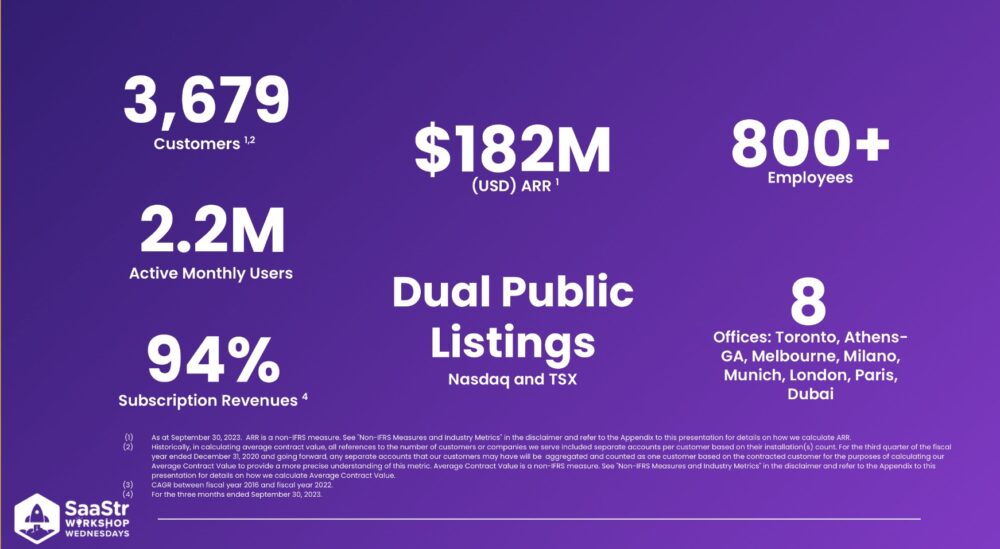
The image above is a glance at Docebo today. 70% of customers are in the Enterprise and mid-market space, and 30% are SMBs. They’re also growing fast and are nicely profitable.
For context, Docebo is a learning management platform addressing the needs of corporations that train an audience internally and externally. Customers range from AWS skills-builder platforms with billions of users to Zoom using it for customers and employees.
Let’s dive into it.
A Lesson Learned: Focus On Messaging When You Have Multiple Use Cases
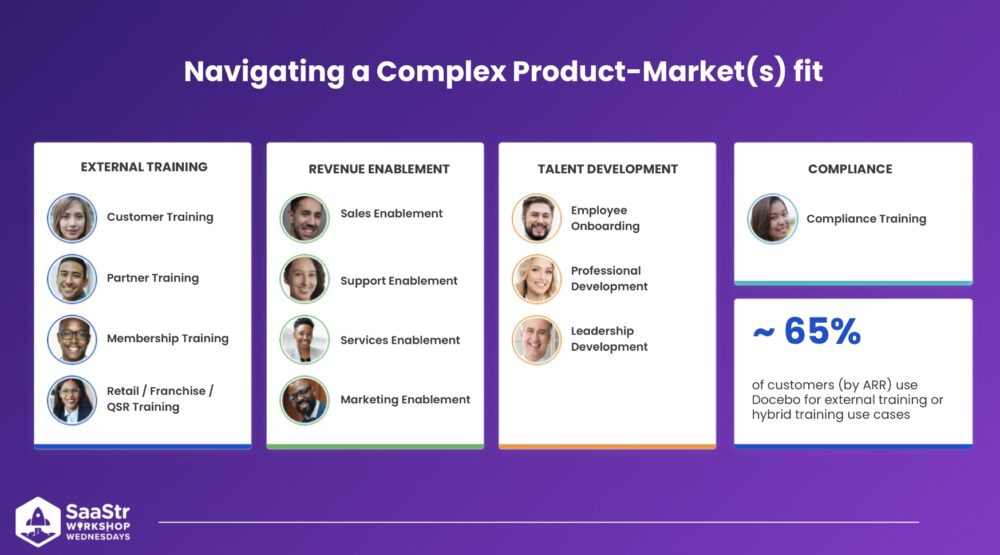
One of the hardest things Docebo had to figure out over time and still struggles with today is being efficient and good at marketing an Enterprise platform with multiple use cases and buyer personas. Why? Because it can dilute your message a lot.
Companies must focus on finding the right ICP that responds better to their messaging. At Docebo, 65% of their customers use it both externally and internally. It’s essential that messaging doesn’t get confused when communicating with these different use cases.
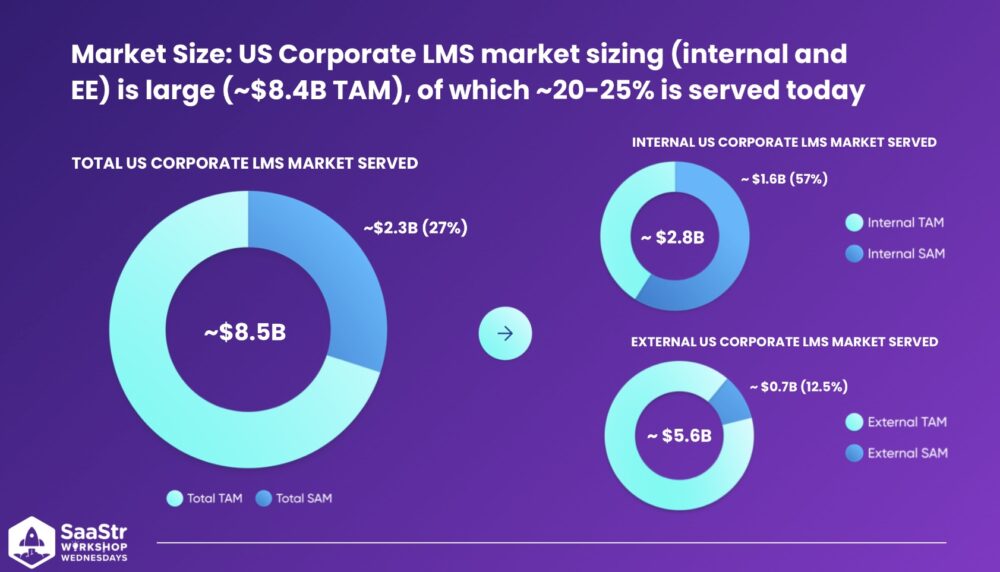
The LMS market segment is big, and Docebo thinks about it in two folds.
- Folks tend to think about Learning Management Systems and HR applications automatically addressing internal audiences and employees of a company.
- People think you can’t build a business without burning a lot of cash, too.
You can read more about the second point in the next section. In regards to LMS being for internal-facing audiences, that’s not always true. Docebo doesn’t focus only on the internal. They were among the first in their category to think of the external side of the market because the external U.S. market is double the size of the internal one. That means that the opportunities to serve customers and partners outside the perimeter of the company are way bigger than in serving employees of corporations.
A Misconception: You Can’t Build a Business Without Burning a Lot of Cash
This is a common misconception. Docebo got to $180M by being extremely efficient while burning very little cash. They take pride in this because they believe anyone can build a great business without burning a lot of cash.
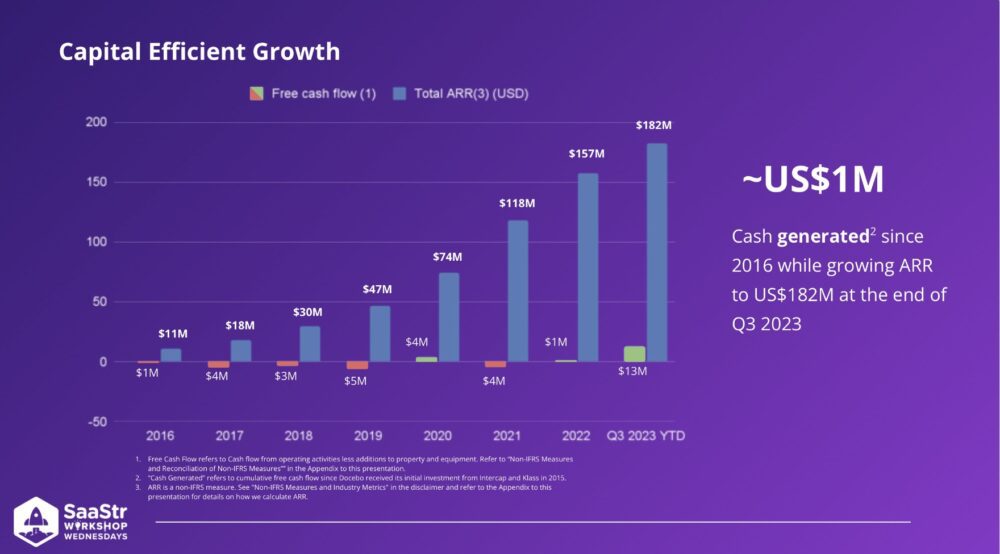
Alessio shared that early on in his career, he wished he prioritized profitability more than he did. Instead, it was growth at all costs. Docebo was started and funded in 2005 and became a SaaS player in 2012. Between 2016 and 2023, you see the ACV (average contract value) going up and up.
That was the result of an operational motion of building a company that, in the beginning, was meant to address SMBs. Over time, they realized the product value was best spent with high-complexity organizations. As a result, the contracts got bigger because they were working with bigger companies.
They started via SMB and are now serving the Amazons of the world. European entrepreneurs tend to say it’s scary to get going in North America because it’s a cash-burning machine. Real estate for offices and employee salaries cost a lot more than in Europe, so Docebo set up in Athens, Georgia, a relatively affordable college town with a big airport nearby. It became a hiring ground for early-stage out-of-college grads who are just getting started and have helped keep Dobeco’s real estate costs and salaries more manageable.
A Lesson Learned: Don’t Undervalue Your Product
A lesson learned from growing a company to $1B is spending more time thinking through pricing strategically and doing it sooner. Get external expertise and ask the hard questions. Folks need to figure out ways to add incremental improvements to pricing, and the only way to do that is to think deeply about how you’re doing it.
Undercharging in the early days is a common story. When considering product market fit and seeing value back when Docebo got traction in 2012, they gave away a ton of value with ridiculously low ARR.
In 2012, they started with a freemium model where people could go online with a credit card and pay $100 a month. This was an early days PLG motion before the term was in play. An optimized trial for buying the app worked with very limited funds. Eventually, Docebo expanded its horizons internationally.
A Misconception: You Need A Lot of Data to Solve Your Problems
People want a lot of data, but they don’t know how to use it. This can cost thousands of hours of wasted effort. When a new sales leader comes in, they usually say the data is messed up, difficult to comprehend, and unclear about where leads are coming from. The reality is data will never be perfect.
The biggest takeaway from this misconception is even with the best data in the world, you won’t get very far if you don’t spend the time really interpreting and making sense of it. Figure out what to do with it and how to create a unified data culture across the organization. Data alone doesn’t solve anything unless you have a framework for using it.
A Lesson Learned: Stay Close to the Customer
Organizations should focus more on customer success no later than 100 paying customers. There’s a lot of noise about companies going toward no customer success. But, no matter what you call it, you have to be really good at caring about the customer.
Customer success is a company’s culture. Everyone has to be aligned on retaining customers, and they have to start early.
Alongside this idea of focusing more on customer success, founders and leaders need to spend more time directly with customers. The bigger you scale, the harder this can be. It’s easy to lose sight of the customer, so fly out and visit your best customers, get on a phone call, and catch up with them as much as possible.
A Misconception: Hiring Someone Big from Microsoft Will Help You Scale
If you’re a founder or almost a founder, you want to hire people better than you. That’s the secret. Different stages require different capabilities, and each stage may not be for everyone, but it can be done. Alessio went from $1-$200M as a first-time CRO.
There’s a secret to going the whole way, and it’s this. The more SMB you are, the faster the sales cycle and the quicker the team learns. A lot of folks in SaaS at $200M or more in ARR that at least started SMBish can go the whole way because you get 1000 at-bats in the beginning. Leadership injections as you scale are tricky. Docebo hired incredible people and others who were incredible, but not for the company.
So, you need to get hyper-selective in who you hire at critical growth stages. Companies are started by pirates in the beginning, wearing nine different hats. Then, you develop a culture that has to permeate, evolve, and improve as you grow. Sometimes, hiring that big Microsoft person with all the credentials isn’t the right fit, even if they’re incredible people. So, founders need to think about the vibe and culture of the company they’re building and find someone who aligns with those ideals.
When you find those great leaders you believe in, get out of their hair more. Don’t micromanage them because they’ll leave, or you won’t get the full value they can bring. Hire for greatness! Don’t look for yes people.
Key Takeaways
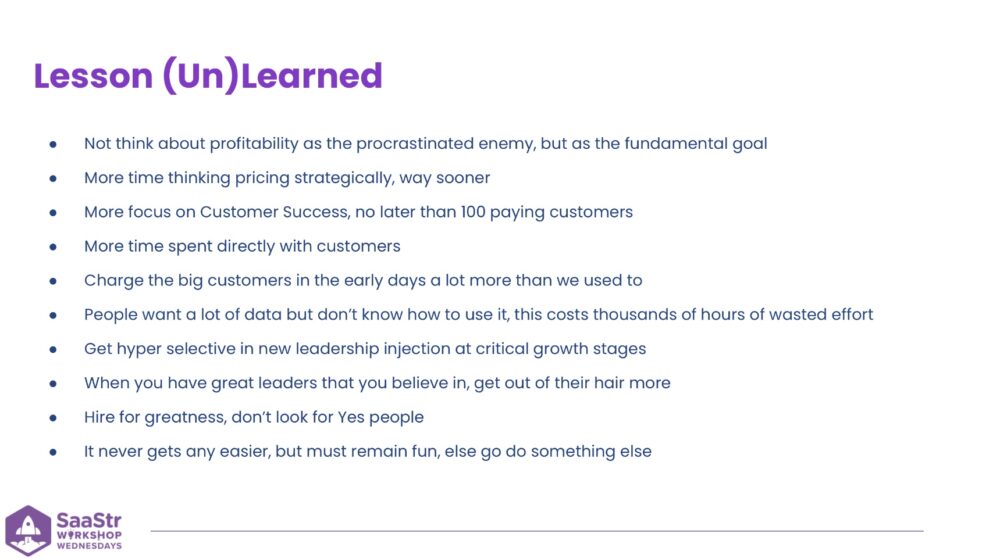
Beyond the lessons learned and misconceptions shared above, there are a few more key takeaways for founders aiming high.
- Execution is king. You want to test and experiment in a measured way and then execute ruthlessly when everything lines up. Teams can underestimate the power of ruthless execution.
- As you’re scaling a company, focus on scaling yourself as a person, too. Surround yourself with mentors and people who can help you grow. It’ll help you avoid a lot of mistakes.
- It never gets any easier, but it must always remain fun. If you aren’t having fun with this constant doing and undoing of things as you scale, it’s time to go do something else.

